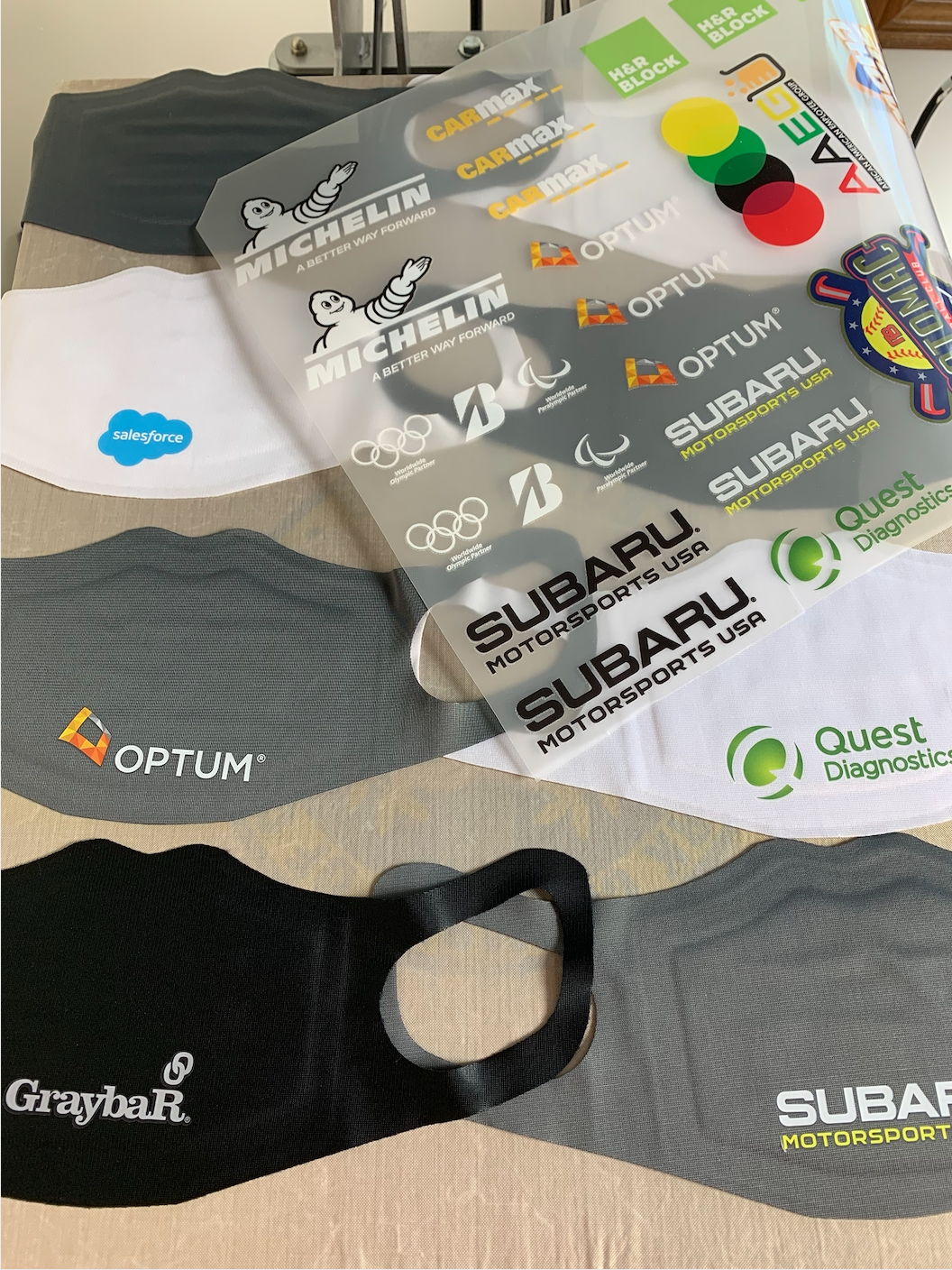About two years ago, customers at Image Solutions began inquiring about heat transfer logos for their uniforms, but the Torrance, California-based distributor only offered embroidery at the time. Since there seemed to be demand, Image Solutions opted to expand its decoration offerings.
Image Solutions has been in business since 1997 as a uniform provider to small businesses and Fortune 500 companies, like AT&T, Albertsons and Walgreens. It has evolved to offer decoration, e-commerce, internal inventory (with distribution centers at its headquarters and, as of eight years ago, in Fairfield, Ohio) and more. While embroidery remains its top decoration method, adding heat transfer has further developed the business, says Alana Owens, the company’s director of operations.
“I think what it has done for our business is expanded our customization options and being able to turn around a customized product quicker,” she said. “Our embroidery items, depending on the volume, can take up to 10 to 12 days versus heat press, depending on the volume, we can turn around 80 pieces an hour. You can do a whole shift. You can turn around almost 1,000 pieces a day.”
The ease is part of the appeal, and makes it a great place to start for distributors that want to branch out with decoration capabilities.
“It’s easy. It’s fast. There’s not a lot of cost in buying the equipment,” she said. “… Overall, I think our customers have been very, very happy with it.”
While Image Solutions does apply all transfers in-house (unless orders and turn time exceeds capacity), the distributor has chosen to purchase precut vinyl transfers from Stahls’ to heat press shirts, aprons and even jackets.
“It works for us now insofar as we order several thousand at a time,” Owens said. “So, we don’t have to worry about having to cut every single one and making it ourselves.”

And that method is what Josh Ellsworth, senior vice president, dealer and enterprise sales for GroupeStahl, parent company of Stahls’ DFC, Masontown, Pa., advises as the best path forward for distributors who need to keep their focus on selling.
“People try to invest into all the equipment to make their own transfers too quick, like the vinyl cutters or the printer cutters or the sublimation printers, like all of the output devices,” he said. “And I think there’s a lot more complexity to learning that equipment that people really shouldn’t. There’s a strong case not to get into them if you can just order and have it pre-done for you, especially with a distributor.”
Distributors can upload the artwork and choose a transfer style and let Stahls’ handle the rest to avoid the tedious process of vinyl cutting and the costly overhead of keeping multiple vinyl colors and styles in stock, for example. Production typically takes three to four days, and the small cost to outsource the transfer creation is worth it to most distributors.
“It may cost them a little more [per transfer],” said Ellsworth. “But, in the grand scheme, I think it costs them less because they don’t have the initial investment in the equipment and they don’t have to carry the labor to do the manufacturing of the transfer, which is where a lot of the detail work is.”
Upon partnering with Stahls’, Image Solutions purchased a pair of heat press machines and received training from Stahls’ in order to learn how to apply heat transfers. But Owens admitted there were learning curves.
“We didn’t have the right recipe per se,” she said. “We may have a polyester shirt, and it may be the heat was too high and the pressure was too long, so it was burning the shirt. We just didn’t have the exact recipe that we thought we needed to know.”
Time, temperature and pressure are the keys to a successful heat transfer, but when Stahls’ strategic account managers returned to Image Solutions and reviewed each fabrication of its standard uniforms, Owens learned how that equation differs by material. Another hurdle was preventing the logos from peeling after laundering, which was the result of the temperature being too high on the heat press.
“[The Stahls’ representatives] stayed the whole day and waited for us to wash the garments, which we did several times, and there was no peeling,” Owens said. “So, ever since then, it’s been going very well.”
Owens cited these issues as the biggest challenges when ramping up the heat transfer part of the business at Image Solutions, but now she hasn’t looked back.
“Once [distributors] get that, they’ll be able to see just the pure volume that they’ll be able to do in a short period of time, and it doesn’t require a lot of labor,” Owens said. “You can literally run two machines at a time. One’s finishing and then you can start another one, and it just provides more options for a company so you can grow your business.”
Want to learn more about heat transfers? Check out The Promo Distributor’s Guide to Apparel Decoration, a free resource for distributors looking to find the right decorating partner, add in-house decoration or build business through e-commerce stores. Download it here.



